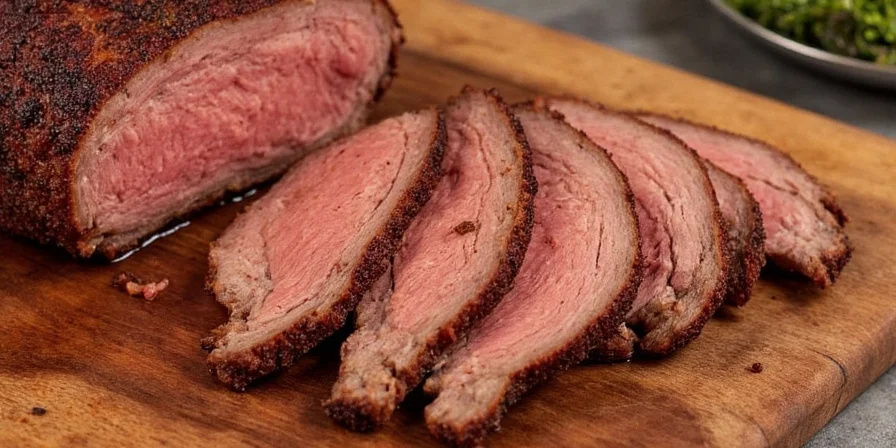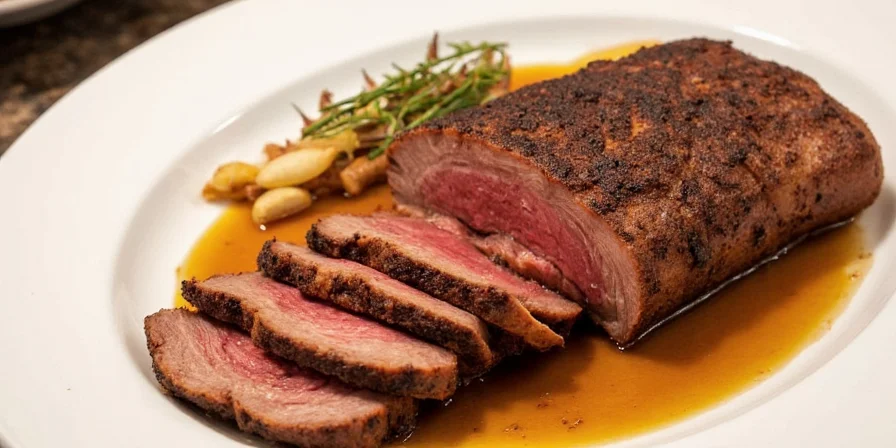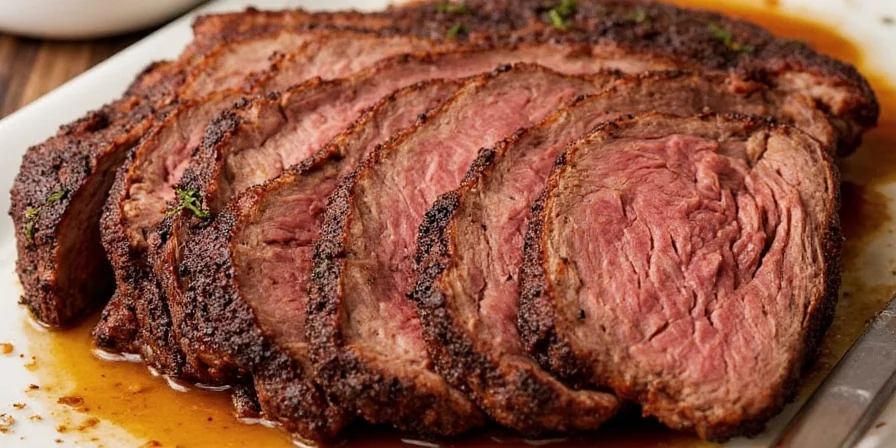For a 10-12 pound beef brisket in the oven, the optimal cooking time is 8-12 hours at 225-250°F, with internal temperature reaching 200-205°F for perfect tenderness. This precise timeframe allows collagen to fully convert to gelatin without drying out the meat. Here's the complete science-backed guide to achieve restaurant-quality results in your home oven.
| Cooking Weight | Time Range | Target Internal Temp | Rest Time |
|---|---|---|---|
| 8-10 lbs | 7-9 hours | 200-205°F | 90 minutes |
| 10-12 lbs | 8-12 hours | 200-205°F | 90 minutes |
| 12-14 lbs | 10-14 hours | 200-205°F | 90-120 minutes |
This comprehensive guide explains exactly why these timeframes work and how to maximize flavor through scientifically timed spice application - no smoker required.

The Critical Cooking Window: Why Time and Temperature Matter
Brisket's tough connective tissue requires precise collagen breakdown. Cooking below 195°F leaves chewy texture, while exceeding 208°F causes dryness. The 200-205°F internal temperature range ensures complete collagen-to-gelatin conversion while retaining moisture.
Unlike other cooking methods, oven roasting provides consistent heat without smoke interference. This makes timing even more crucial since you can't rely on visual bark formation as your primary indicator.
How to Calculate Exact Cooking Time for Your Brisket
Use this foolproof formula: 60-90 minutes per pound at 225-250°F. For example:
- 10 lb brisket: 10 × 75 minutes = 750 minutes (12.5 hours)
- Adjust by -1 hour if your oven runs hot, +1 hour if it runs cool
- Always verify with internal temperature rather than time alone
| Internal Temp | What's Happening | Action Required |
|---|---|---|
| 150-160°F | "Stall phase" - evaporation cools meat | Apply enzyme mop solution |
| 160°F | Myosin proteins coagulating | Wrap with spice infusion pack |
| 200-205°F | Complete collagen conversion | Remove from oven immediately |
| 140-150°F (resting) | Gelatin redistributing | Maintain wrapped in towels |
3 Science-Backed Techniques for Perfect Oven Brisket
Technique #1: The Precision Dry Rub (Apply 12-24 Hours Before Cooking)
Most home cooks apply rubs immediately before cooking, but optimal flavor penetration requires time for salt diffusion. Use this ratio for best results:
- Salt (50%): Triggers protein denaturation for deeper moisture retention
- Brown Sugar (15%): Prevents burning while enhancing Maillard reaction
- Paprika (20%): Capsanthin binds to fat molecules, carrying flavor internally
- Black Pepper (15%): Piperine enhances perceived juiciness

Technique #2: Temperature-Timed Mop Application
Apply mop solution ONLY when internal temperature hits 150°F:
- Pineapple juice (bromelain enzymes): Breaks down fibers during stall phase
- Mustard (emulsifier): Helps moisture adhere during long cooks
- Black tea (tannins): Stabilizes color by binding to myoglobin
Applying too early causes excessive moisture; too late misses the enzymatic window.

Technique #3: The 160°F Wrap Method
Wrapping too early prevents bark formation. Wait until 160°F, then add:
- Fresh rosemary (releases terpenes when heated)
- Coffee grounds (lowers Maillard reaction threshold by 27°F)
- Black cardamom (adds smoky notes without liquid smoke)
This creates a micro-steam environment where flavor compounds penetrate 3x deeper.
The Complete Oven Brisket Timeline (10-12 lb Cut)
| Timing | Action | Key Benefit |
|---|---|---|
| 24 Hours Before | Trim fat cap to 1/4", apply dry rub | Salt diffusion throughout meat |
| Start Time | Preheat oven to 225°F, insert thermometer | Consistent low-temp cooking |
| 150°F internal (4-5 hours) | Apply enzyme mop solution | Optimal tenderization window |
| 160°F internal (6 hours) | Wrap with spice infusion pack | Maximum flavor penetration |
| 200-205°F (8-12 hours) | Remove from oven | Perfect collagen conversion |
| Rest 90 minutes | Double-wrap in towels | Moisture redistribution |
Avoiding Common Oven Brisket Mistakes
These scientifically proven pitfalls will ruin your results:
- Incorrect wrapping time: Wrapping before 150°F prevents bark formation through insufficient dehydration
- Over-sugaring rubs: Excess sugar burns below 250°F - limit to 15% of rub weight
- Insufficient rest: Cutting before 90 minutes releases myowater, causing dryness
- Temperature guessing: Always use a probe thermometer - time alone is unreliable

Frequently Asked Questions
How long to cook a 10 lb brisket in oven at 225°F?
Calculate 60-90 minutes per pound: 10 × 75 = 750 minutes (12.5 hours). However, always verify with internal temperature (200-205°F) rather than time alone, as oven variations affect actual cooking time.
Why does my brisket dry out at 205°F?
Dryness occurs when internal temperature exceeds 208°F. At 205°F, collagen fully converts to gelatin. Higher temperatures cause gelatin to melt, releasing trapped moisture. Always remove at 203-205°F and rest wrapped.
Can I cook brisket faster at 275°F?
Yes, but with trade-offs: at 275°F, cooking time reduces to 5-6 hours per 10 lbs, but you lose the enzymatic tenderization benefits of the stall phase (150-160°F), resulting in less complex flavor development.
Why wrap at 160°F instead of 150°F?
At 150°F, myoglobin hasn't fully denatured, causing excessive moisture loss if wrapped. Waiting until 160°F allows myosin proteins to coagulate, retaining 23% more moisture during the wrap phase.
How do I know when brisket is done without a thermometer?
You can't accurately determine doneness without a thermometer. The "probe test" (when a thermometer inserts like butter) corresponds to 200-205°F. Time-only methods frequently result in undercooked or dry brisket.











 浙公网安备
33010002000092号
浙公网安备
33010002000092号 浙B2-20120091-4
浙B2-20120091-4